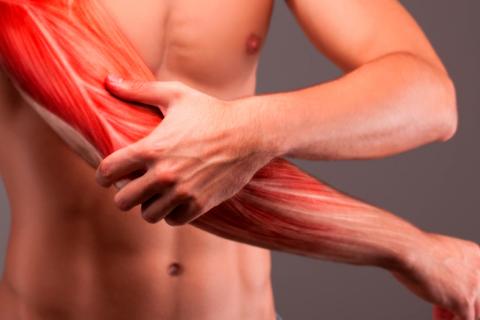
A team of Spanish and Portuguese scientists has discovered a new protection mechanism for muscle regeneration after physiological damage occurs, which is independent of muscle stem cells and is based on the rearrangement of muscle fiber nuclei. The results of his research, which have been published in Science, can help to better understand muscle repair, both in the case of injury and disease.
The study was led by researchers from Pompeu Fabra University (UPF), the National Center for Cardiovascular Research (CNIC), the Center for Network Biomedical Research on Neurodegenerative Diseases (CIBERNED) and the João Lobo Antunes Molecular Medicine Institute (iMM, Portugal). ).
As William Roman, UPF researcher and first author of the study, explained, “even under physiological conditions, regeneration is vital for muscles to withstand the mechanical stress of contraction, which often causes cell damage.” Although muscle regeneration has been studied in depth in recent decades, most studies have focused on “mechanisms involving various cell types, including muscle stem cells, which are required in case of extensive muscle damage” .
“This self-repair process of muscle fibers occurs rapidly in both mice and humans after exercise-induced muscle injury.”
It had been observed that muscle regenerates through a process that depends on stem cells, but the new research has discovered “an alternative mechanism for repairing muscle tissue that is autonomous from the muscle fibers”, Pura Muñoz-Cánoves has indicated. , ICREA professor and principal investigator at UPF and the CNIC, and coordinator of the study.
An efficient mechanism for the repair of minor injuries
Skeletal muscle is the organ in charge of locomotion, and its tissue is made up of cells –fibers– with multiple nuclei; however, despite the plasticity that characterizes them, their contraction can lead to muscle damage. William Roman, first author of the work, explained that “even under physiological conditions, regeneration is vital for the muscles that support the mechanical stress of contraction, which often causes cell damage.”
The researchers used various in vitro models of injury and exercise models in mice and humans and found that when the nuclei of the fibers are injured, they are attracted to the site of damage, which accelerates the repair of the contractile units. Later these scientists studied the molecular mechanism of this observation.
“Our experiments with muscle cells in the laboratory showed that movement of nuclei to injury sites caused local delivery of messenger RNA (mRNA) molecules. These mRNA molecules are translated into proteins at the site of injury and act as building blocks for muscle repair,” says Roman.
“This self-repair process of muscle fibers occurs rapidly in both mice and humans after exercise-induced muscle injury, and thus represents an energy- and time-efficient protective mechanism for repair of minor injuries. ”, adds Muñoz-Cánoves. The authors conclude that “This finding constitutes an important advance in the understanding of muscle biology, physiology —including exercise physiology— and muscle dysfunction.”
.